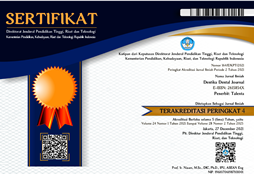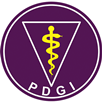Acceleration of Wound Healing Process Using Lactoferrin by Stimulating Proliferation of Fibroblasts in Wistar Rats (Rattus Novergicus): In Vivo Method
DOI:
https://doi.org/10.32734/dentika.v26i2.12081Keywords:
Collagen, Fibroblasts, Wound, Wound healingAbstract
Wound is disruptions in the uniformity of body tissue structure, including the outermost layer from the skin to the internal organs, parts of fat, muscles, bones, and others. To address this issue, lactoferrin is a bioactive compound with promising benefits, playing a crucial role in wound healing by enhancing fibroblasts migration and proliferation, as well as collagen synthesis. Moreover, when used in wound therapy, lactoferrin induces a decrease in pro-inflammatory cytokines production by macrophages with an increase in the expression of VEGF and FGF-2. This study aimed to determine the role of lactoferrin in accelerating in vivo incision wound healing in Wistar rats and to prove the correlation between fibroblasts and collagen. This study adopted a laboratory experimental design using a post-test only control group with 28 samples. The samples were divided into the control, and three experimental groups, each treated with two drops of Lactoferrin (Shaner Whey Protein) at 20 mg/ml, 40 mg/ml, and 80 mg/ml. Each sample was observed for an increase in fibroblasts proliferation and density of collagen fibers. Lactoferrin concentration of 80 mg/ml had the most effect on increasing the number of fibroblasts and collagen with a significant value > 0.05, using a posthoc test. Lactoferrin concentration of 80mg/ml showed the most significant results, showing a significant acceleration in wound healing process.Â















